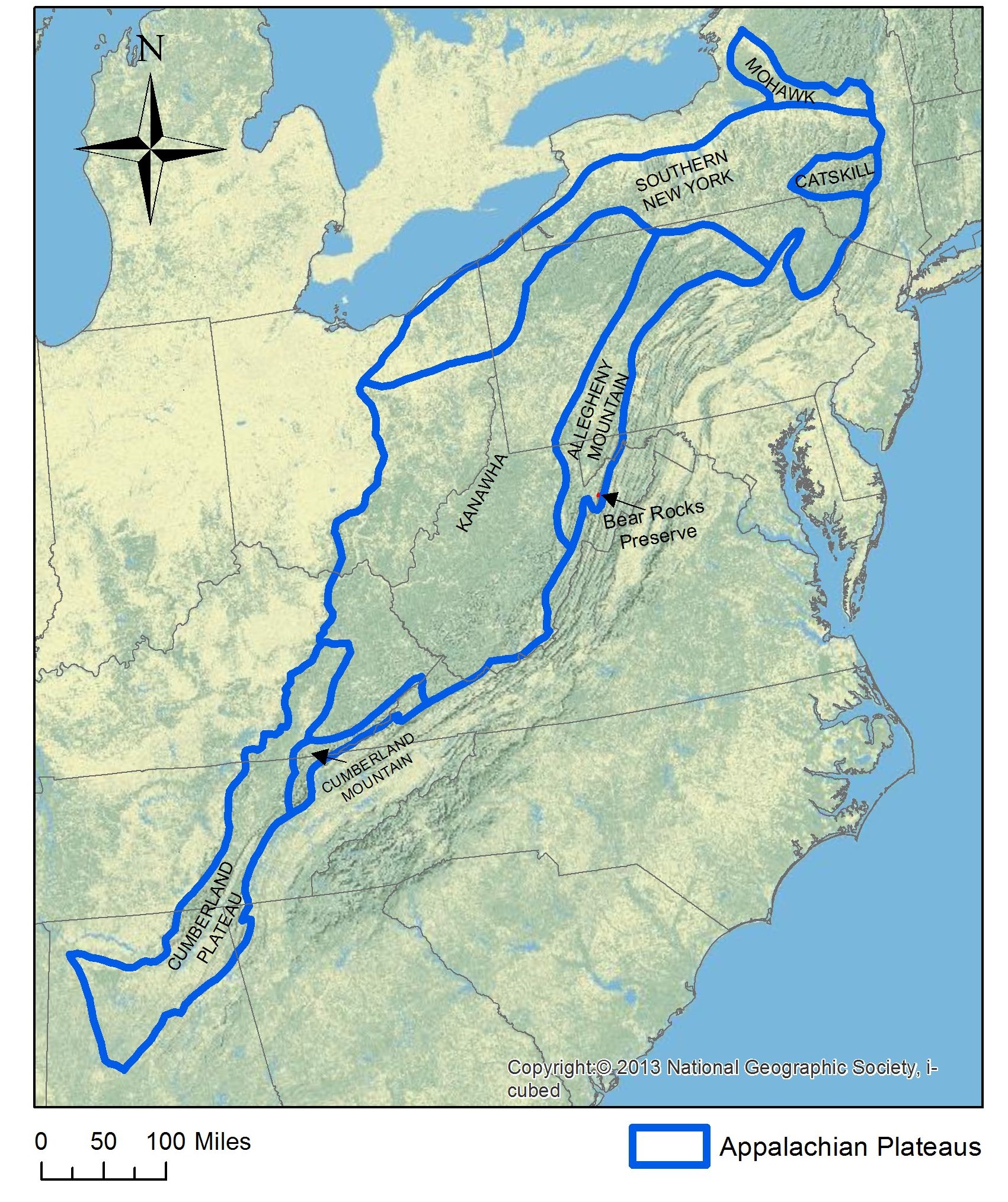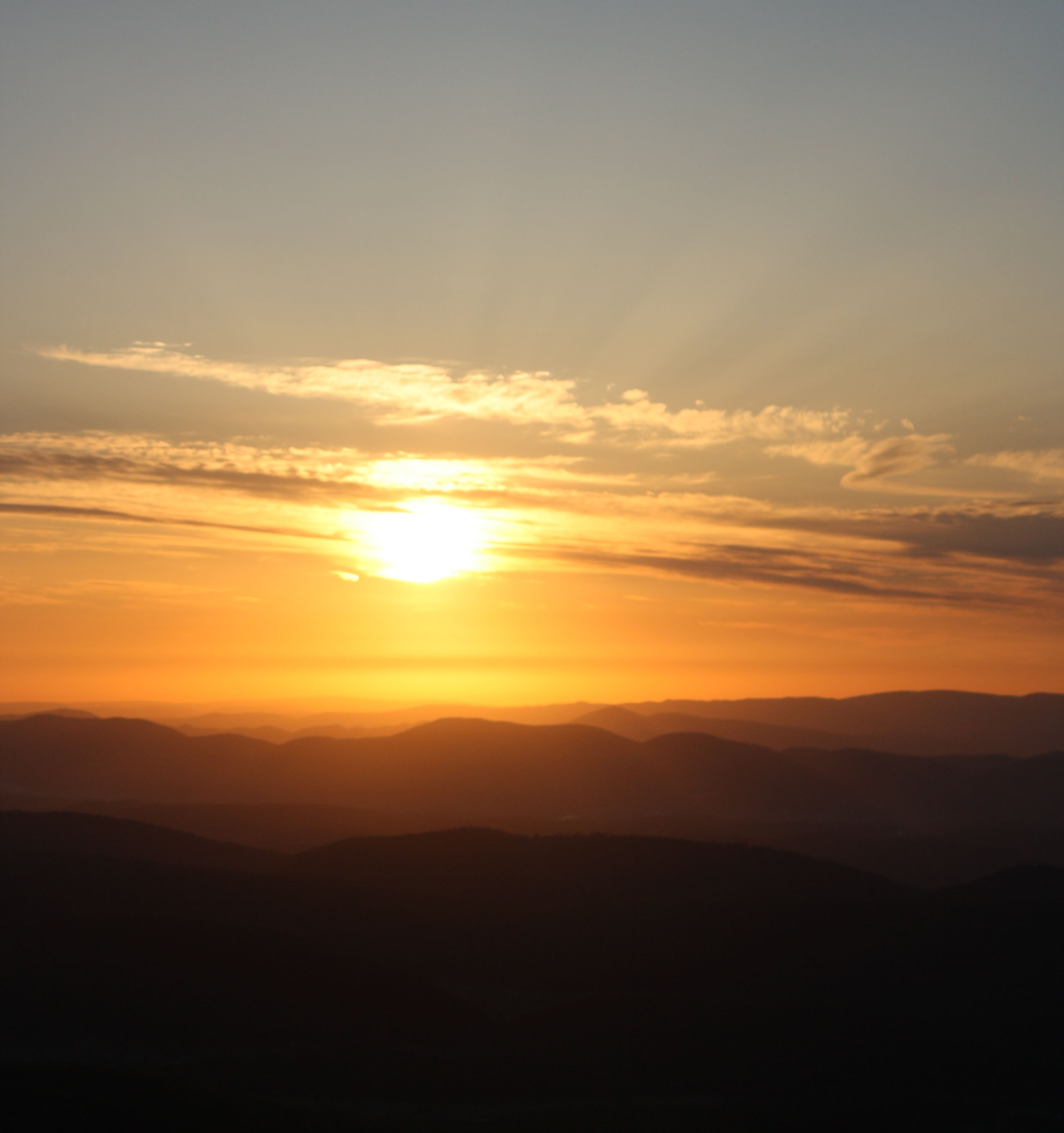Post by Natalie Somerville ’17
Hey friends! I’m Natalie and I have the good fortune of doing research with Todd Lookingbill during May and June of this summer. I am working on writing a proposal to the National Park Service to suggest adding a new landmark to their National Registry of Natural Landmarks.
Now, if you are unfamiliar with the concept of National Natural Landmarks, let me explain a bit: they are not equivalent to the status of National Parks; I am not proposing a new National Park, sadly, although that would be pretty sweet. When the NPS gives a site the designation of “National Natural Landmark,” it means that the specific site is the best representative example of some geological or biological feature within a physiographic region of the United States.
The Appalachian Plateaus province of the U.S., which goes from Alabama to New York (see figure above for a map of the 7 sections within the Plateaus region; the site I am researching is located on the eastern edge of the Allegheny Plateau section in West Virginia), does not have any National Natural Landmarks designated within it to represent the geological feature of a plateau. …No plateau landmark within the Plateaus province..? Seems like a major gap. And here is where my project comes in! I am researching the geology and ecology of an area of land in West Virginia called Bear Rocks, in hopes of writing a report to the National Park Service saying why Bear Rocks should be considered as a new landmark to represent the plateau theme.
Bear Rocks is already a Preserve, owned and managed by The Nature Conservancy, so there would be no extra protection given to the area even if my proposal is accepted and this site becomes a new landmark. I began research on this project with a few classmates in my SSIR (Protected Lands of the American West) this past semester, and our whole community took a weekend trip to the site. When you actually go to the Bear Rocks Preserve and run up the rocks to stand on the edge of the plateau, looking out over the vast horizon over to the Blue Ridge Mountains, it is clear how well this area of land demonstrates the features of a plateau. Plus, you get some pretty good views of the sunrise:
I conducted a site visit to Bear Rocks in mid-May, a trip that included a meeting with the Land Conservation Practitioner for the West Virginia chapter of The Nature Conservancy. It was very helpful to talk to someone who has worked in and around this area of land for several years and knows what is important about it. Something it made me learn about research in general: I may do various internet searches and think I know information about a place, but talking to people who are familiar with the topic or subject of research will bring invaluable knowledge and clarity to the project. This research project is a team effort and cannot be completed without many different voices and areas of expertise.
We are certainly moving forward in the information we know and making progress with writing the report! There is still a lot to be done, but I and the people involved with this project are expectant and hopeful that Bear Rocks will prove to be the best candidate for a National Natural Landmark designation, representing plateaus.





